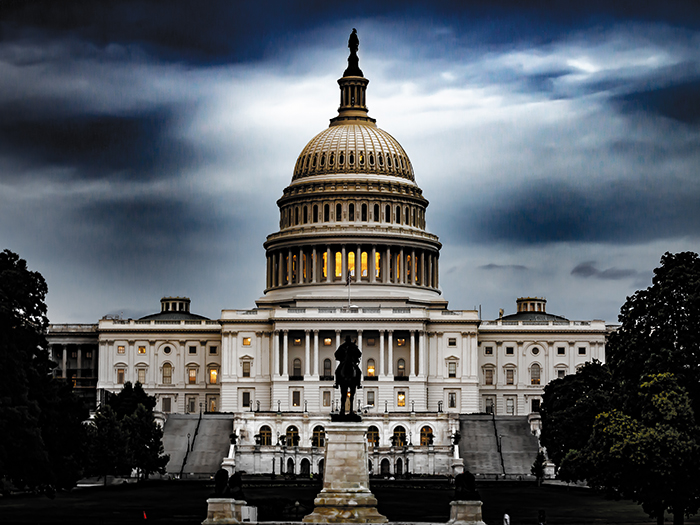Billions in Possible Liability Exposures for PFA Manufacturers as Regulatory Attention Ratchets Up

Early in June, Senator Kirsten Gillibrand and Representative Antonio Delgado (both D-NY) reintroduced legislation that would regulate per- and poly-fluoroalkyl substances (PFAS) under the Clean Water Act.
Separately, the Environmental Protection Agency has published final regulatory determinations on PFAS. That clears the way for a national drinking water standard to be implemented early next year.
For all the flurry in Washington, the states have raced ahead of federal regulation and legislation. In mid-May, Vermont became the latest of about two dozen states to regulate PFAS. Vermont banned the manufacture, sale or use of a wide range of substances containing PFAS.
Most ominously from the standpoint of exposures, the National Law Review (NLR) published an article in late May stating, “Estimates for the costs to the chemical companies for PFAS litigation is upwards of over two billion dollars and climbing, with direct impacts on [investment] portfolios that include those companies.”
The Underwriter and Brokerage Response
Underwriters and insureds are taking the financial and risk management implications seriously, because PFAS are ubiquitous in consumer and industrial substances, from water repellent to glossy magazines.
One high-profile exposure is PFA-containing firefighting foam that has percolated into drinking water supplies.

Toby Smith, president, Ironshore Environmental
Environmental underwriters are doing their best to stay focused, rely on best practices that have been established for decades and not panic.
“Like many underwriters, Liberty Mutual/Ironshore is going to evaluate each risk,” said Toby Smith, president, Ironshore’s environmental and casualty divisions.
“We are not going to start making blanket exclusions, because there is such a wide range of exposures. In some industries the use of PFAS has been so widespread that it is very difficult to avoid exposure.”
Risks are specific to a site. The presence of formulations or goods containing PFAS vary in the degree of risk: A site that stored consumer goods may have had a high concentration of PFAS but in a solid and stable form.
In contrast, a company that spray treated its materials with PFAS and sent its waste water to a treatment facility may face claims downstream from the discharge point.
But that aside, from a regulatory perspective, the screws are being tightened. The existing contamination standard is 70 parts-per-trillion (PPT), while states have been setting their standards at less than 10 PPT.
“That is lower than I have ever seen,” Smith said. “Those are levels that could not even have been measured before. There is so much going on, the science and health studies are continuing, but the momentum seems to be heading toward new standards at the lower range, if not single digits then perhaps in the teens.”
This will no doubt amplify exposures.
No Reason to Panic Yet
If there is any good news, it is that the processes for underwriting coverage and managing claims has been refined in the five decades since the Comprehensive Environmental Response, Compensation, and Liability Act (CERCLA), commonly known as Superfund, was enacted in 1980.
That act still provides good guidance, Smith said.
“It’s always a matter of magnitude. The focus is on the exposure pathway and the characteristics of the insureds. Not every case will have an automatic exclusion. Only in cases of inherent use will it be difficult to extend that coverage. Even in those cases, we are always willing to consider creative solutions,” he said.
Jim Vetter, managing director of complex environmental risks at Marsh, confirmed that his brokerage “is not aware of any carrier slapping on universal exclusions. By and large, they are looking at the history of usage as they would for any other contaminant.”
He urged insureds to “go in with your technical information, your inventory lists and your material safety data sheets.”

Jim Vetter, managing director, Marsh
Vetter also noted, “Even in situations where exclusion is inevitable, it is again possible to explore the cost-cap market. That has not been an option for several years, but cost-cap is back from several carriers, especially if insureds can establish the scope and scale of exposure. It is again possible to approach those markets. Of course insureds should get pollution liability if possible. Those policies often include third-party damage and legal defense coverage.”
He also urged owners to think beyond site liability to product liability, especially insureds in manufacturing or distribution.
“First and most important, be aware of your exposure,” said Vetter.
“Second, be aware that general liability policies often have some limited product protection. Most broadly, be aware that there is a robust market for product-pollution coverage beyond site coverage.”
That goes back to the first point about exposure, which extends to goods created and distributed.
“To the extent the insured knows about their PFAS use and exposures — providing the carrier with as much information as possible during the underwriting process will help the underwriters understand the scope of the exposure,” said Marcel Ricciardelli, senior vice president of Allied World environmental and design professional divisions.
That said, Ricciardelli added, “Coverage for known issues that have already occurred is not available. If you have an environmental policy and believe coverage may apply to a pollution event, regardless of the specifics of the contaminants, always follow the policy reporting provisions and notify your carrier as soon as possible. This is the best starting point to determine if coverage would be available for this exposure.”
As with any other exposure, underwriters are evaluating each insured’s operations and operational history and offering coverage where appropriate. Based on the information, a PFAS exclusion can be tailored to specific locations or coverage parts. For certain risks, the PFAS exposure may be unavoidable.
The Importance of the Environmental Shift
Reflecting on how far environmental liability and risk management have come in the decades since CIRCLA, Ricciardelli said, “Superfund was created when the science of environmental risk assessments and remediation were just established.”
In addition, Superfund is a component of the regulatory schemes that addresses the management and cleanup of contaminated sites. Over time, the process has shifted to incorporate voluntary cleanup programs based on site settings, exposure pathways and impact to potential receptors.”

Marcel Ricciardelli, senior vice president at Allied World North America Environmental and Design Professional Divisions
That shift has facilitated, as the statutes state, the beneficial reuse of contaminated properties and best and highest use based on the science of environmental risk assessments.
“Underwriting has learned to evaluate the exposures based on the site’s environmental setting, applicable regulatory requirements and the potential receptor populations surrounding the facilities,” said Ricciardelli.
“Uncertainty due to lack of information, emerging risks and science and potential new regulatory schemes will drive more restrictive coverage or an inability to insure certain risks. As with any insurance underwriting, the predictability of the exposure is critical to evaluating and pricing the risk,” Ricciardelli added.
“Unfortunately, PFAS are at the intersection of changing regulations, evolving risk assessment and developing environmental remediation science, which makes this exposure difficult to quantify and underwrite.”
Once limits for certain PFAS are implemented, wrote John Gardella, a shareholder at CMBG3 Law in Boston, in the NLR article, “PFAS levels found above the limits will trigger the state enforcement agencies to seek cleanup costs, penalties, and fines from businesses, landowners, and other entities that agencies find responsible.”
He continued, “Depending on the severity of the pollution and the culpability that the regulatory agencies determine for specific entities, these costs can range from tens of thousands of dollars to millions of dollars. With the extent of costs, entities look to other parties to try to recoup some or all of these costs, which means lawsuits and the associated costs of proceeding with or defending those lawsuits.”
In states that have progressively set PFAS drinking water standards, the hits to profits are already playing out on a near-daily basis, Gardella further noted.
“Some companies are finding themselves being named in lawsuits by private citizens who allege that their drinking water is contaminated, their health effects are due to the PFAS-containing drinking water, and property values have diminished due to PFAS contamination,” he said.
“Water utilities especially are scrambling to find ways to estimate and pay for cleanup costs in their districts, with many turning to litigation to try to hold polluting parties responsible for the costs. The insurance industry, too, has spent years attempting to determine the risk of loss due to PFAS, with publicly available estimates ranging widely from hundreds of millions of dollars to billions of dollars.” &











